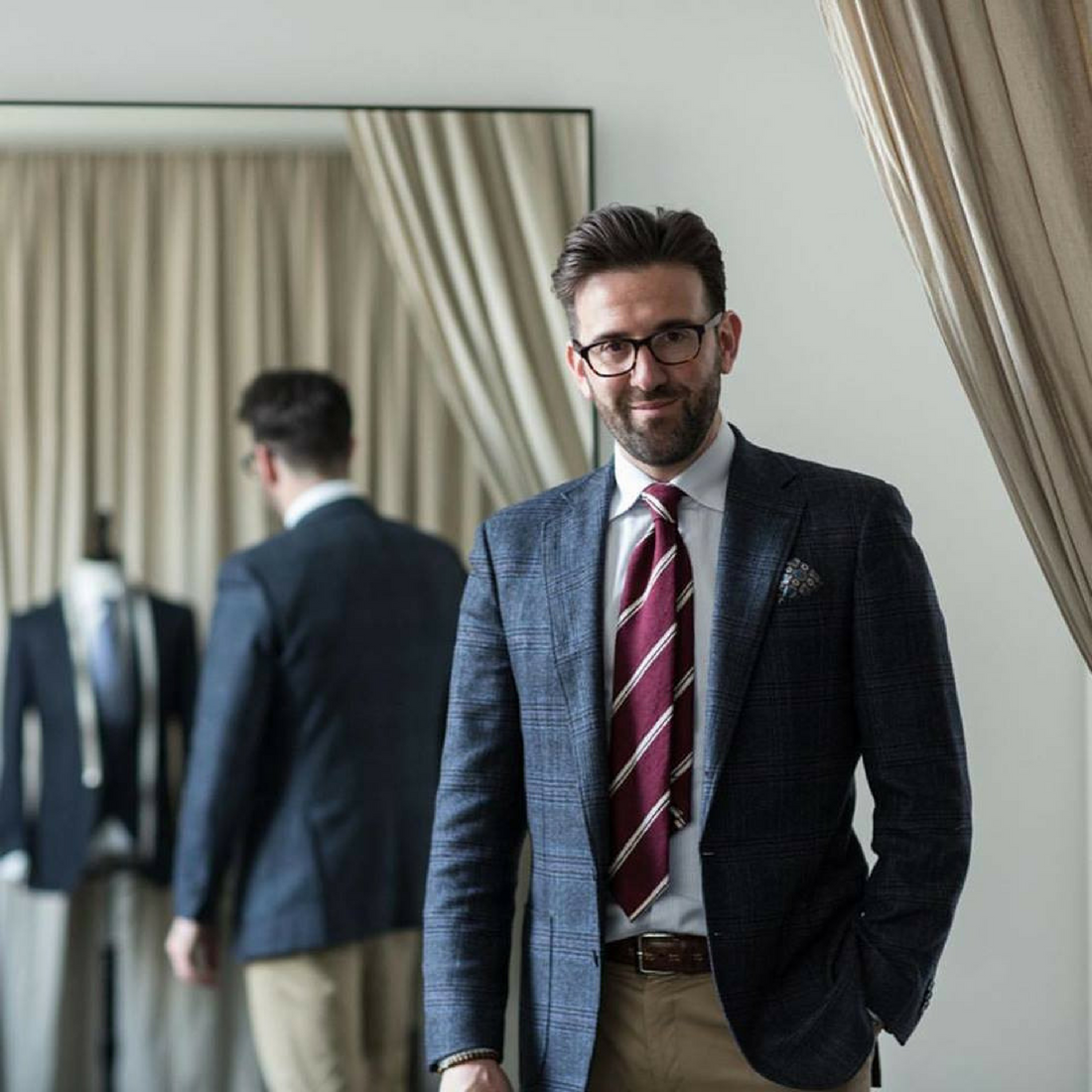Individually Tailored
Springtime in Melbourne means wildly changeable weather, plane trees in overdrive and horse racing.
Races take place throughout the year, but the Spring Racing Carnival unites fans and fashionistas under one marquee. Millions of dollars are spent on clothes, accessories and flowers, to say nothing of accommodation and hospitality.
For Melbourne’s fashion community, the Spring Racing Carnival is peak season. In the lead-up to Melbourne Cup, we chatted with bespoke suit tailor Carl Navè, who runs his flourishing business out of his Bourke St atelier in the centre of Melbourne.
What kind of impact does the Spring Racing Carnival have on your business?
The Spring Racing Carnival is my Christmas – typically I see a huge spike in business over September and October. Men often use the carnival as an excuse to buy a new suit and springtime in Melbourne is all about colour and warmth. People want to buy new clothes because the weather is nicer and they want to be out and about in it.
What kind of operational issues do you have to consider when you’re preparing for the Spring Racing Carnival?
Staffing is the first thing, making sure my business has the capacity to handle orders. In practice that means calling in favours and making sure the right people are on board to handle increased demand.
In terms of buying things ahead of time to prepare, I don’t buy fabrics in advance as fabric choices can be up to the individual and it’s hard to know what will inspire you.
I’ve found it pays to make sure you’re in the good books with overseas contacts. I’ve got great relationships with factories and mills overseas; they know my business and understand how it grows during peak times. They’re reliable and I can contact them as I need for assistance.

It also helps to know who your clients are and what their needs are. If I’ve worked with a client in previous years and have a good rapport with him I’d try to pre-empt things by sending him a quick email to see if he’s intending to go to the races again this year. It creates a more personalised service when I try to anticipate the needs of my customers.
What’s changed most in the men’s fashion market over the last few years?
Attention to detail. Men are now much more focused on the details of their looks, not just their suits but also their accessories. Particularly in Melbourne, bespoke fashion has really grown. Men now know that they don’t need to look like everyone else. They can ask for what they want and get it.
Part of working predominately in men’s retail is understanding the different ways people shop. As a rule, men tend to focus on longevity as well as being on trend. A bespoke suit is an investment. I aim to create clothes that are current but timeless at the same time.
What makes Australian racing fashion unique?
We have the most colourful race meets in the world.
Some of the events in the Carnival, like Derby Day, tend to be more traditional. There you’ll see fashions that come from the old morning suits worn at Ascot, and of course, you have the black and white colour palette.
But in general, particularly at Cup time, you’ll see an explosion of colour. Melbournians love to embrace colour – the Melbourne ethos of fun in the sun is captured in bright colours and bold patterns. The emphasis is less on tradition and more on being expressive.
When preparing for the Spring Racing Carnival I do pay attention to what race meets in Europe and Britain are doing but generally racing there tends to be more conservative.
Frankly, I’m more inspired by Pitti Uomo (an important international event for menswear and men’s accessories held in Florence and Milan) which is colourful and relaxed, still formal and elevated but with more ease.
What advice do you have for people in fashion retail who may be readying themselves for their first Spring Racing Carnival?
It’s all about being prepared – having your product and your looks ready.
You should be planning for the spring rush over autumn and winter and make sure you have the staffing to support increased demand.
Know your image and remember it’s not just the suit that makes a look, it’s also accessories. Focus on the whole look.